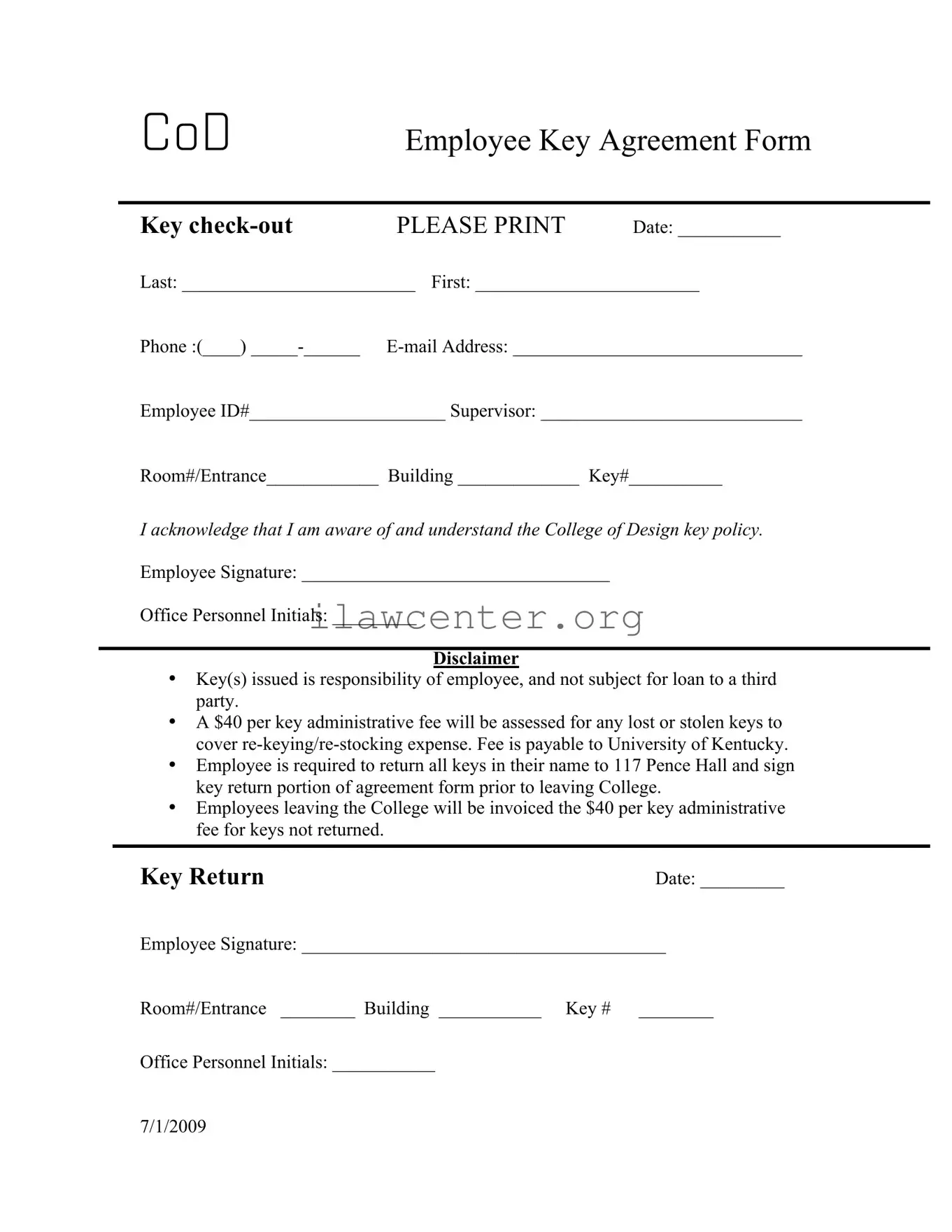Instructions on Utilizing Key Agreement
After completing the Key Agreement form, it is important to follow the next steps carefully to ensure compliance with the College of Design’s key policy. This process helps maintain security and accountability regarding key management within the institution.
- Print the form: Start by obtaining a physical copy of the Key Agreement form or printing it from the designated source.
- Fill in the date: Write the current date in the space provided at the top of the form.
- Provide personal information: Enter your last name, first name, phone number, e-mail address, and employee ID number.
- Input supervisor details: Write the name of your supervisor, along with the corresponding room number and building name.
- Record the key number: Fill in the key number assigned to you on the form.
- Acknowledge key policy: Read the statement acknowledging your understanding of the College of Design key policy and sign your name in the designated area.
- Obtain office personnel initials: Ensure that the office personnel in charge initials the form to validate the process.
- Provide return details: If you have already returned a key, fill in the return date, your signature, room number, building name, and key number for the key being returned.
- Final office personnel initials: Again, secure the initials of the office personnel to confirm the return.
Once all sections are accurately completed and signed, submit the form to the appropriate office personnel for processing. Make sure to retain a copy for your records if possible.

